Last Updated on January 17, 2024 by Greg Gillson
I had no idea.
It was May 2013. I was visiting Malheur National Wildlife Refuge in southeastern Oregon.
At refuge headquarters the staff had impaled cut orange halves on the tree branches to make impromptu fruit bird feeders. Migrant tanagers had arrived overnight and dozens were eating those oranges! Boy, did I get some great photos that day!
What kinds of wild birds will eat fresh oranges?
Birds that eat fruit and berries as part of their diet will likely eat oranges. There are many birds that migrate to the tropics in winter that are especially known for their affinity to fruit, including oranges.
The first birds named as eating oranges are orioles. Baltimore Orioles and Orchard Orioles in the East and Bullock’s Orioles and Hooded Orioles in the West eat oranges. There are other less widespread (in the US) oriole species from southern California to Florida that will eat oranges.
Scarlet Tanagers in the East and Western Tanagers in the West eat oranges. I haven’t directly found any references to Hepatic Tanagers or Summer Tanagers eating oranges, but suspect they would.
The orioles and tanagers may be more likely to eat fruit, such as oranges, at your feeder in spring when they first arrive. When feeding young they will likely switch to a strictly insect diet. Later in summer and early fall they (and the new young birds) will return to eating oranges and other fruits and berries at your feeder again.
Northern Mockingbirds are noted to eat oranges.
Red-bellied Woodpeckers seem especially attracted to oranges among the woodpeckers. Some other woodpeckers may eat oranges, too.
Gray Catbirds, American Robins, Wood Thrushes and other thrushes and bluebirds are fruit eaters and would likely be attracted to oranges.
Rose-breasted Grosbeaks in the East are known to eat oranges. If they do, then the Black-headed Grosbeaks in the West likely do too.
Brown Thrashers eat oranges. No doubt many of the other thrashers would too. They are otherwise quite hard to attract to a backyard feeder.
Certainly omnivores like jays and crows and European Starlings would eat oranges, wouldn’t they? You probably wouldn’t want these larger and more aggressive birds at your feeder, though.
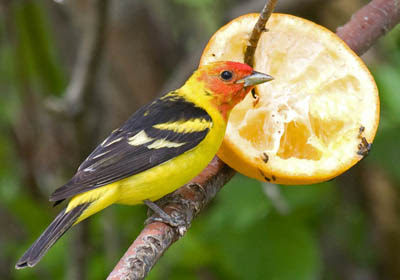 |
|
Western Tanager eating an orange.
Photo by Greg Gillson
|
Will birds eat oranges in winter?
Yes indeed! Many of the birds that eat oranges in summer in North America migrate to the tropics for the winter. However, many of those other birds listed above do not migrate.
Bluebirds, mockingbirds, woodpeckers, robins, and other birds may eat oranges in winter. You may be surprised at what other birds may show up for such a treat.
The brightly colored oranges show up well at your winter feeder. If any birds are interested, they’ll be able to spot those oranges at quite a distance.
By the end of December most birds have settled into their winter homes. They will likely stay in place until early April. This means that you’ll have more time in winter for the birds to find and sample your oranges. You can experiment with orange halves, smaller slices, or oranges chopped up even smaller.
How do you feed birds oranges?
- The simplest way to feed oranges to birds is simply cut them in half (across the sections) and place them on your platform-type bird feeder. Fruit-eating birds passing by will see them easily. However, larger birds, like crows, or other animals may steal the food away. So you may want to secure the orange, as follows….
- Impale an orange-half on a nail or tree branch in a place where birds can find them but other pests may have a hard time reaching them. [See the opening photograph] Fruit eating birds are used to eating fruit in trees (where else?) and may be reticent to join in with the rowdy seed eaters at your feeder.
- A few orange halves or sections may be placed together in a suet feeder (no suet). You can discourage larger birds and starlings from getting at your oranges if you add a longer chain to the suet feeder. When heavier birds (or animals) get on a suet feeder with a longer chain, the feeder tends to swing wildly. Starlings have weaker feet and have difficulty eating from such a suet feeder and frequently fall off. Smaller birds don’t cause the same swinging motion.
- You may decide to go all-in on feeding oranges by purchasing a special oriole feeder. Good for you! There are many types of oriole feeders for sale on Amazon. Check out all the designs, including a couple that feature nectar, spikes for oranges, and fruit or jelly cups all in one feeder! Yes, orioles drink nectar too (same sugar formula as for hummingbirds)! They just need a special access hole that is larger, without letting in bees.
- Finally, you can create a homemade bird feeder out of a hollowed-out rind of an orange. The orange half acts as a bowl. You can poke a few holes around the rim of the orange bowl and “sew” yarn or twine through them to make a hanging bird feeder made from the orange. Inside you can add cut up pieces of fruit or jelly, including pieces of orange. You can put seed in your homemade orange bird feeder, but fruit eaters don’t usually eat seeds and seed eaters may take over. This type of feeder will only last a few days but may be a fun project to do with the kids.
 |
|
Western Tanager eats at an orange-and-jelly oriole feeder.
Photo by Greg Gillson
|
Fruit–not just oranges
It turns out that orioles may actually be attracted to grape jelly even more than oranges!
Welches seems to be the preferred brand according to birding forums I read preparing this article. And the squeeze bottle was said to be easier to use than a jar that has to be spooned out.
Many oriole feeders have both spikes to impale orange halves and cups for jelly. Look for feeders that come with sturdy glass cups that can be washed rather than flimsy plastic cups.
Apple slices, grapes, chopped raisins, bananas. Any over-ripe fruit can go on your platform bird feeder. You can make a temporary tray feeder for just these special occasions.
It’s amazing how much fruit is wasted in late summer and fall. All the fruit comes on at once and you can’t eat it all before it starts getting soft spots. Or you buy it at the market and it is too green. You set it on your counter to ripen and it goes soft on the bottom before it ripens. Don’t get mad. Don’t throw it out. You now have free bird food! Try these kitchen scraps as bird food!
Don’t put out too much at once though. You don’t want to attract pests. And you don’t want to feed birds moldy oranges or other fruit. If it goes bad on your feeder get rid of it, as we’ll discuss next.
Keep it clean!
More than perhaps other types of bird food, fruit can quickly spoil and go bad. That juicy, sugary orange will attract ants and start molding within a few days.
Even the plastic oriole feeders are difficult to clean of any mold that forms. One person said he didn’t have any problem cleaning his–he used a pressure washer! This is just to say that there is more work involved in keeping orange feeders clean, pretty, and sanitary. If you can’t take the time, perhaps it is best not to feed fruit to birds.
Feeding oranges to birds is almost certain to attract insects, yellow jackets, and ants. It is possible that mice and rats will find them. Raccoons, opossums, and skunks may raid your feeder for fruit or seeds. Thus, it is essential to throw out any uneaten or rotten fruit and keep your feeder clean. This is really the responsibility with feeding anything to birds, even just seeds–keep your yard clean and sanitary for your bids and for yourself.
Wrapping Up
Feeding fruit to birds can be a contentious issue. Here are my tips for giving a range of fruits to backyard birds.
Whether or not you should feed fruit to wild birds depends on several factors:
Pros of feeding fruit to wild birds:
Supplemental food source: Fruit can provide an additional source of nutrients and energy for birds, especially during the colder months or in areas with limited natural food resources.
Attract different species: Some birds, such as robins, jays, and tanagers, readily eat fruit and might be attracted to your yard if you offer it.
Natural enrichment: Eating fruit can be a natural and enriching activity for birds, adding variety to their diet and encouraging foraging behavior.
Cons of feeding fruit to wild birds:
Unbalanced diet: Offering mostly fruit can lead to an unbalanced diet and potential health problems for birds if they don’t receive enough protein and other essential nutrients from other sources like insects and seeds.
Competition and aggression: If fruit is scarce, competition for this resource might lead to increased aggression and territorial behavior among birds.
Attracting unwanted animals: Overripe fruit can attract rodents, raccoons, and other animals that can be harmful to birds and disrupt the ecosystem.
Best practices for feeding fruit to wild birds:
Offer a variety of foods: Provide a mix of fruit, seeds, suet, and other bird-appropriate foods to ensure a balanced diet.
Choose appropriate fruits: Stick to fruits that are native to your area and safe for birds to eat, such as berries, grapes, apples (cut in half), oranges (cut in half), and melons. Avoid highly processed fruits or those with added sugars.
Offer small amounts: Place small quantities of fruit in separate feeders or on dedicated spots to prevent large gatherings and competition.
Keep feeders clean and fresh: Regularly clean and disinfect feeders to prevent the spread of diseases and remove moldy or rotten fruit.
Monitor the situation: Observe how birds are responding to the fruit and adjust your offerings if you notice any negative impacts.
Frequently Asked Questions
What dried fruit is best for wild birds?
When choosing dried fruit for wild birds, it’s important to strike a balance between nutritional value, appeal, and safety. Here are some of the best dried fruit options:
Cranberries: Packed with antioxidants and vitamins, cranberries provide a burst of energy and essential nutrients. Their tartness is also highly attractive to many birds.
Raisins: A readily available and popular choice, raisins offer an energy boost thanks to their concentrated sugars. Choose unsulfured and organic varieties for the best quality.
Cherries: Chopped or halved cherries offer a good source of vitamins, minerals, and dietary fiber, making them a healthy treat for birds.
Blueberries and blackberries: These small berries are full of antioxidants and vitamins, making them a nutritious and delicious option for bird feeding.
Apples and pears: Sliced thin or chopped, dried apples and pears offer a variety of vitamins, minerals, and fiber, and their sweetness is well-liked by many birds.
Can squirrels and birds eat oranges?
Yes, both squirrels and birds can eat oranges! While not their regular dietary staple, oranges offer valuable nutrients and are enjoyed by these creatures in different ways:
Squirrels:
Nutritional benefits: Oranges provide squirrels with vitamin C, which is crucial for their immune system function and collagen production. The fruit also contains sugar for energy and dietary fiber for digestive health.
Eating habits: Squirrels typically peel the orange rind and eat the fleshy segments. They might be particularly attracted to ripe oranges as the sweetness levels are higher.
Considerations: While most squirrels can tolerate moderate amounts of citrus, excessive consumption of oranges can lead to diarrhea or stomach upset due to the high acidity.
Birds:
Nutritional benefits: Similar to squirrels, birds can benefit from the vitamin C and sugar content of oranges. Pecking at the rind can also provide them with calcium and other minerals.
Eating habits: Birds usually only eat the soft, juicy parts of the orange, leaving behind the rind and seeds. Smaller birds might only manage small pieces or nectar-like juice drops.
Considerations: Some birds, like hummingbirds, can readily access the nectar through puncture holes made by larger birds or squirrels. However, be aware that mold growth on exposed orange flesh can be harmful to birds, so ensure any leftover pieces are removed promptly.
Related Articles:
These seeds are the favorite of birds
Why do birds throw seeds out of the feeder?






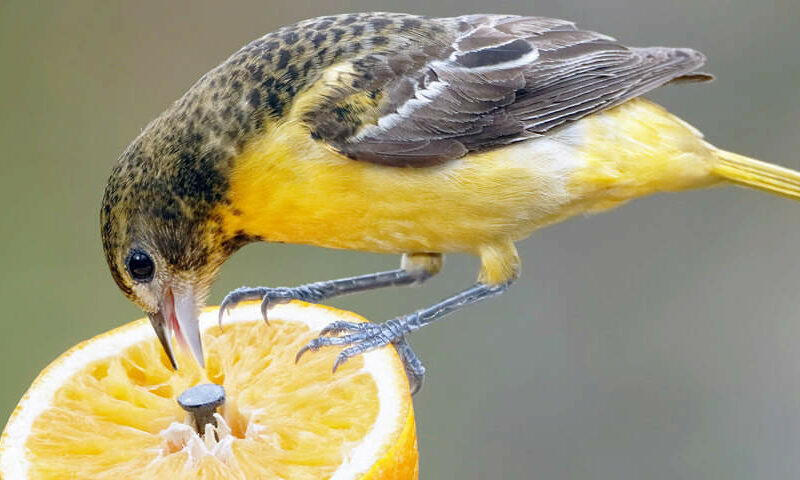
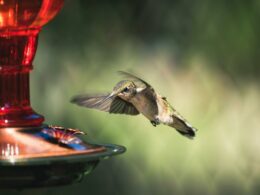
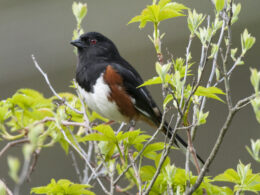
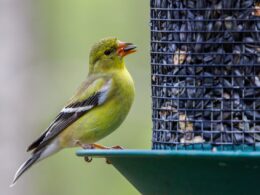
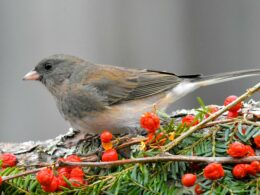
Your tips are so great. I appreciate that.